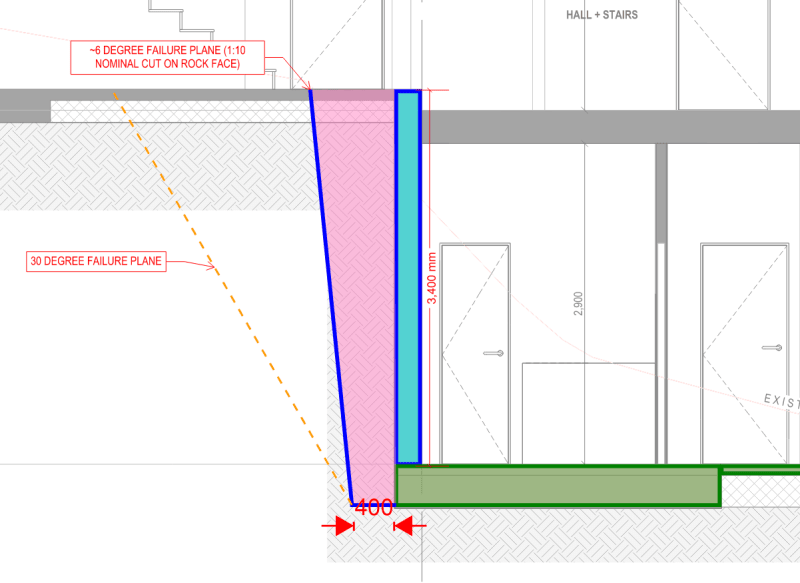-
1
- #1
Greenalleycat
Structural
Howdy,
Designing a big ol wall for a client that is ~3.4m high + footing (3.8m overall)
The face is supposedly mostly rock, so the wall is mostly retaining its own backfill
As you'd expect, using typical retaining wall theory I'm getting pretty big loads that make a realistic wall unachieavable
I've been looking into research on such walls to reduce my loads, and found a handy paper here that is applicable
The problem is, I'm only working out at about a ~15% reduction in load
As you can see from my sketch, I'm probably retaining 1/3 of the soil in the active wedge that I'd normally expect - so this isn't quite computing in my head
Thoughts, facts, feelings from the experienced crowd here?
(please don't just tell me to talk to the geotech. A man can try multiple pathways in his learning)

Designing a big ol wall for a client that is ~3.4m high + footing (3.8m overall)
The face is supposedly mostly rock, so the wall is mostly retaining its own backfill
As you'd expect, using typical retaining wall theory I'm getting pretty big loads that make a realistic wall unachieavable
I've been looking into research on such walls to reduce my loads, and found a handy paper here that is applicable
The problem is, I'm only working out at about a ~15% reduction in load
As you can see from my sketch, I'm probably retaining 1/3 of the soil in the active wedge that I'd normally expect - so this isn't quite computing in my head
Thoughts, facts, feelings from the experienced crowd here?
(please don't just tell me to talk to the geotech. A man can try multiple pathways in his learning)

